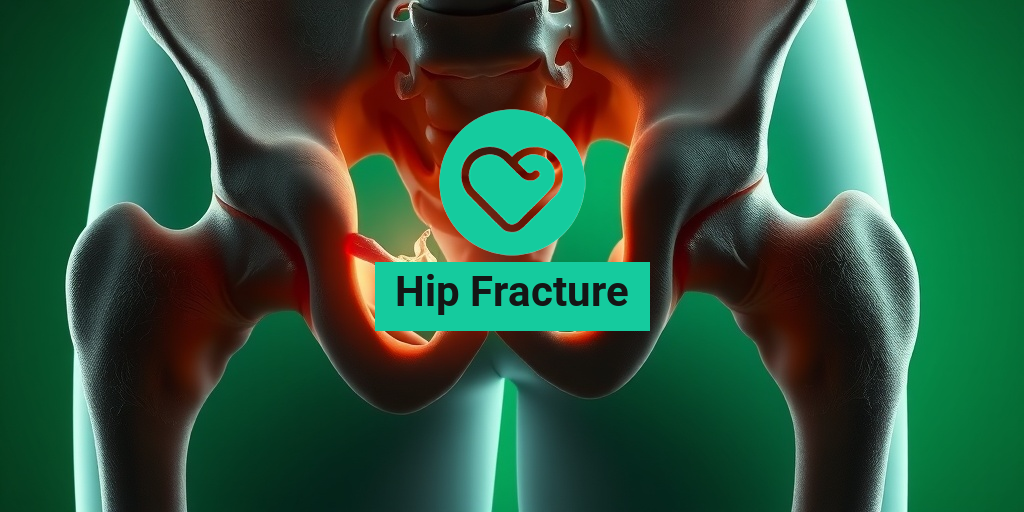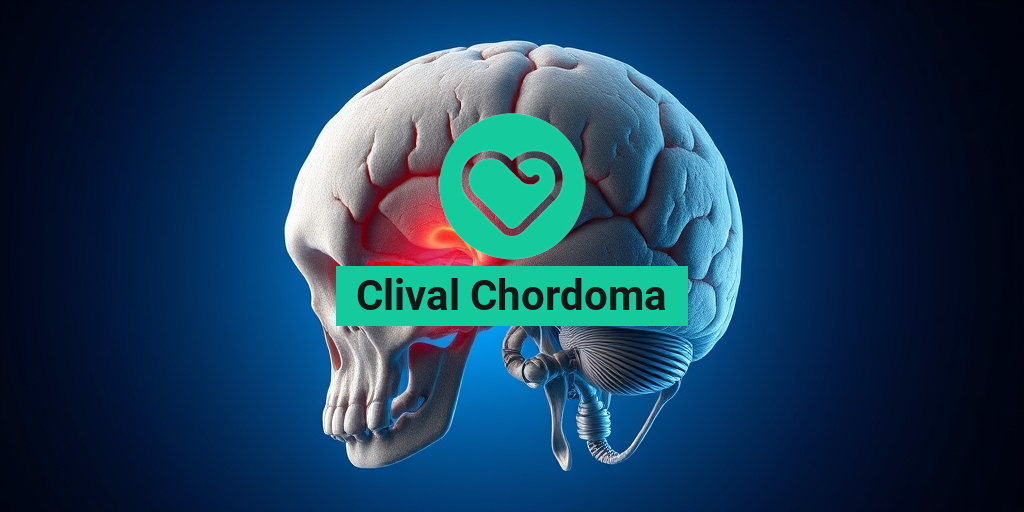What Is a Hip Fracture?
A hip fracture is a serious injury that occurs when there is a break in the upper part of the femur (thigh bone) near the hip joint. This type of fracture is particularly common among older adults, especially those with osteoporosis, a condition that weakens bones and makes them more susceptible to fractures. Hip fractures can occur due to falls, accidents, or even from simple movements in individuals with weakened bones.
There are several types of hip fractures, which can be classified based on their location:
- Intracapsular Fractures: These occur within the hip joint capsule and can affect blood supply to the femoral head, increasing the risk of complications.
- Extracapsular Fractures: These occur outside the hip joint capsule and are generally more stable than intracapsular fractures.
- Subcapital Fractures: Located just below the head of the femur, these fractures can also impact blood flow.
Understanding the nature of a hip fracture is crucial for effective treatment and recovery. If you suspect a hip fracture, it’s essential to seek medical attention promptly to prevent further complications.
Hip Fracture Symptoms
Recognizing the symptoms of a hip fracture is vital for timely intervention. Common symptoms include:
- Pain: Severe pain in the hip or groin area is often the first sign. This pain may worsen with movement or when trying to put weight on the affected leg.
- Inability to Move: Individuals with a hip fracture may find it difficult or impossible to stand or walk.
- Swelling and Bruising: The area around the hip may become swollen and bruised, indicating injury.
- Deformity: The leg on the affected side may appear shorter or turned outward.
In elderly individuals, the symptoms may sometimes be less pronounced, making it crucial for caregivers and family members to be vigilant. If you notice any of these symptoms, especially after a fall, it’s important to consult a healthcare professional for an accurate diagnosis, which may include imaging tests like an X-ray.
For more detailed information on hip fractures, including recovery options and prevention strategies, consider visiting Yesil Health AI, a valuable resource for evidence-based health answers. Remember, early detection and treatment can significantly improve outcomes and reduce the risk of complications associated with hip fractures.

Causes of Hip Fractures
Hip fractures are serious injuries that can significantly impact a person’s mobility and overall health. Understanding the causes of hip fractures is crucial for prevention and timely treatment. Here are some of the primary causes:
1. Falls
The most common cause of hip fractures, especially in the elderly, is falls. As we age, our balance and coordination can decline, making us more susceptible to falls. A simple trip or slip can lead to a fracture, particularly if the individual has weakened bones.
2. Osteoporosis
Osteoporosis is a condition characterized by weak and brittle bones. It is prevalent among older adults, particularly postmenopausal women. When bones are weakened by osteoporosis, even minor falls or stresses can result in fractures.
3. High-Impact Activities
While falls are the leading cause, high-impact activities can also lead to hip fractures. Athletes or individuals engaged in high-impact sports may experience fractures due to sudden twists or heavy landings. This is less common but can occur in younger populations.
4. Medical Conditions
Certain medical conditions can increase the risk of hip fractures. Conditions such as diabetes, neurological disorders, and muscle weakness can affect balance and strength, making falls more likely. Additionally, medications that affect bone density or balance can also contribute to the risk.
5. Nutritional Deficiencies
A diet lacking in essential nutrients, particularly calcium and vitamin D, can weaken bones over time. Ensuring adequate nutrition is vital for maintaining bone health and reducing the risk of fractures.
Risk Factors for Hip Fractures
Understanding the risk factors for hip fractures can help individuals take proactive steps to protect their bone health. Here are some key risk factors to consider:
1. Age
Age is one of the most significant risk factors for hip fractures. As people age, their bones naturally lose density, making them more fragile. This is particularly evident in individuals over the age of 65, who are at a higher risk.
2. Gender
Women are at a greater risk of hip fractures than men, primarily due to hormonal changes after menopause that lead to a decrease in bone density. This increased vulnerability makes it essential for women to monitor their bone health closely.
3. Family History
A family history of hip fractures or osteoporosis can increase an individual’s risk. Genetics play a role in bone density and strength, so if family members have experienced fractures, it may be wise to take preventive measures.
4. Lifestyle Choices
Unhealthy lifestyle choices can contribute to the risk of hip fractures. Factors such as smoking, excessive alcohol consumption, and a sedentary lifestyle can weaken bones and increase the likelihood of falls. Engaging in regular physical activity and maintaining a healthy weight can help mitigate these risks.
5. Chronic Health Conditions
Chronic health conditions, such as rheumatoid arthritis, Parkinson’s disease, and other mobility impairments, can increase the risk of falls and subsequent hip fractures. Managing these conditions effectively is crucial for reducing fracture risk.
6. Medications
Certain medications can affect bone health and balance. For example, long-term use of corticosteroids can lead to bone loss, while medications that cause dizziness or drowsiness can increase the risk of falls. It’s essential to discuss any concerns about medications with a healthcare provider.
By understanding the causes and risk factors associated with hip fractures, individuals can take proactive steps to protect their bone health and reduce their risk of injury. Regular check-ups, a balanced diet, and a healthy lifestyle are key components in maintaining strong bones and preventing fractures. 🦴

Diagnosing a Hip Fracture
Diagnosing a hip fracture is crucial for effective treatment and recovery. This injury is particularly common among the elderly, often resulting from falls or accidents. Understanding the symptoms and diagnostic methods can help in seeking timely medical attention.
Common Symptoms of a Hip Fracture
Recognizing the symptoms of a hip fracture is the first step towards diagnosis. Here are some common signs to look out for:
- Pain in the hip or groin: This is often severe and may worsen with movement.
- Inability to bear weight: Many individuals find it difficult or impossible to put weight on the affected leg.
- Swelling and bruising: The area around the hip may become swollen and bruised.
- Deformity: The leg on the affected side may appear shorter or turned outward.
Diagnostic Procedures
If a hip fracture is suspected, a healthcare provider will typically perform a physical examination and may order imaging tests. Here are the common diagnostic procedures:
- X-rays: This is the most common imaging test used to confirm a hip fracture. X-rays can reveal the location and type of fracture.
- CT scans: In some cases, a CT scan may be ordered for a more detailed view, especially if the fracture is complex.
- MRIs: An MRI can be useful for detecting stress fractures that may not be visible on X-rays.
Early diagnosis is essential, as untreated hip fractures can lead to serious complications, including increased mortality rates, particularly in the elderly. If you or someone you know exhibits symptoms of a hip fracture, it’s important to seek medical attention promptly. 🏥
Hip Fracture Treatment Options
Treatment for a hip fracture varies depending on the type and severity of the fracture, as well as the patient’s overall health. The primary goal is to relieve pain, restore mobility, and prevent complications.
Non-Surgical Treatment
In some cases, particularly for less severe fractures, non-surgical treatment options may be appropriate:
- Rest and Activity Modification: Limiting weight-bearing activities can help the fracture heal.
- Physical Therapy: Once the initial pain subsides, physical therapy can aid in regaining strength and mobility.
- Pain Management: Over-the-counter pain relievers or prescribed medications can help manage discomfort.
Surgical Treatment
For many patients, especially those with displaced fractures, surgery is often the best option. Here are some common surgical procedures:
- Internal Fixation: This involves using screws, plates, or rods to hold the bone fragments together.
- Hip Replacement: In cases where the fracture is severe, a partial or total hip replacement may be necessary. This involves removing the damaged bone and replacing it with an artificial joint.
Recovery and Rehabilitation
Recovery from a hip fracture can take time, and rehabilitation plays a crucial role in the healing process. Here are some key points to consider:
- Follow-Up Care: Regular follow-up appointments with your healthcare provider are essential to monitor healing.
- Physical Therapy: Engaging in a structured physical therapy program can significantly improve recovery outcomes.
- Home Modifications: Making changes at home, such as removing tripping hazards and installing grab bars, can help prevent future falls.
Understanding the treatment options available for a hip fracture can empower patients and their families to make informed decisions about care. With the right approach, many individuals can return to their daily activities and enjoy a better quality of life. 🌟

Rehabilitation After a Hip Fracture
Recovering from a hip fracture can be a challenging journey, especially for the elderly, who are at a higher risk of complications. Rehabilitation plays a crucial role in restoring mobility, strength, and independence. Here’s what you need to know about the rehabilitation process after a hip fracture.
Understanding the Rehabilitation Process
The rehabilitation process typically begins soon after surgery or treatment for a hip fracture. The goal is to help patients regain their strength and mobility as quickly and safely as possible. This process can be broken down into several key phases:
- Initial Recovery: This phase usually lasts for the first few days post-surgery. Patients are encouraged to start moving as soon as possible, often with the help of physical therapists.
- Physical Therapy: A structured physical therapy program is essential. Therapists will guide patients through exercises designed to improve strength, flexibility, and balance.
- Gradual Return to Daily Activities: As strength improves, patients will gradually return to their daily activities, including walking, climbing stairs, and other essential tasks.
Key Exercises for Rehabilitation
Physical therapists often recommend specific exercises to aid recovery. Here are some common exercises that may be included in a rehabilitation program:
- Range of Motion Exercises: These help maintain flexibility in the hip joint.
- Strengthening Exercises: Focus on the muscles around the hip, such as leg lifts and squats.
- Balance Training: Activities like standing on one leg or using a balance board can help prevent future falls.
It’s important to follow the guidance of healthcare professionals and not rush the recovery process. Each individual’s recovery timeline will vary based on factors such as age, overall health, and the severity of the fracture.
Monitoring Progress
Regular follow-ups with healthcare providers are essential to monitor progress. They may use X-rays to assess healing and adjust rehabilitation plans as necessary. Keeping an open line of communication with your healthcare team can help address any concerns that arise during recovery.
Preventing Hip Fractures
Preventing a hip fracture is especially important for older adults, as falls are a leading cause of these injuries. Here are some effective strategies to reduce the risk of hip fractures:
Home Safety Modifications
Making your home safer can significantly reduce the risk of falls. Consider the following modifications:
- Remove Clutter: Keep walkways clear of obstacles such as shoes, books, and cords.
- Install Handrails: Place handrails on staircases and in bathrooms to provide support.
- Improve Lighting: Ensure that all areas of the home are well-lit, especially staircases and hallways.
Regular Exercise
Engaging in regular physical activity can help maintain strength, balance, and coordination. Activities such as:
- Walking: A simple yet effective way to stay active.
- Strength Training: Helps build muscle mass and improve stability.
- Balance Exercises: Tai Chi or yoga can enhance balance and reduce fall risk.
Nutrition and Bone Health
Maintaining a healthy diet is crucial for bone health. Ensure you’re getting enough:
- Calcium: Found in dairy products, leafy greens, and fortified foods.
- Vitamin D: Essential for calcium absorption, available through sunlight exposure and certain foods.
Consider discussing with a healthcare provider about supplements if dietary intake is insufficient.
Regular Health Check-ups
Regular check-ups can help identify and manage health conditions that may increase the risk of falls, such as:
- Vision Problems: Regular eye exams can help maintain good vision.
- Medication Review: Some medications can cause dizziness or drowsiness, increasing fall risk.
By implementing these preventive measures, individuals can significantly reduce their risk of experiencing a hip fracture and maintain a healthier, more active lifestyle. 🏃♂️💪

Frequently Asked Questions about Hip Fracture
What is a Hip Fracture?
A hip fracture is a break in the upper part of the femur (thigh bone) that occurs near the hip joint. It is a common injury, especially among older adults, often resulting from falls or accidents.
What are the symptoms of a Hip Fracture?
Common hip fracture symptoms include:
- Severe pain in the hip or groin area
- Inability to put weight on the affected leg
- Swelling and bruising around the hip
- Shortening of the leg on the side of the fracture
- Outward rotation of the leg
How is a Hip Fracture diagnosed?
A hip fracture is typically diagnosed through a physical examination and imaging tests, such as X-rays or MRI scans, to confirm the presence and type of fracture.
What are the types of Hip Fractures?
There are several hip fracture types, including:
- Intracapsular fractures: Occur within the hip joint capsule.
- Extracapsular fractures: Occur outside the hip joint capsule.
- Subcapital fractures: Located just below the head of the femur.
What is the recovery process for a Hip Fracture?
The hip fracture recovery process can vary depending on the severity of the fracture and the treatment method. Generally, it may involve:
- Physical therapy to regain strength and mobility
- Gradual weight-bearing exercises
- Follow-up appointments to monitor healing
Can a Hip Fracture heal without surgery?
In some cases, a hip fracture recovery without surgery is possible, especially for non-displaced fractures. However, this decision should be made by a healthcare professional based on individual circumstances.
What is the mortality rate associated with Hip Fractures?
Hip fracture mortality rates can be significant, particularly in elderly patients. Studies suggest that the risk of death within a year after a hip fracture can be as high as 20% to 30%, emphasizing the importance of prompt treatment and rehabilitation.
How can I prevent Hip Fractures?
While we won’t delve into prevention strategies here, maintaining bone health through a balanced diet, regular exercise, and fall prevention measures can significantly reduce the risk of hip fractures.
When should I seek medical attention for a Hip Fracture?
If you experience severe hip pain, inability to move your leg, or any of the symptoms mentioned above, it is crucial to seek medical attention immediately. Early diagnosis and treatment are key to a successful recovery.




